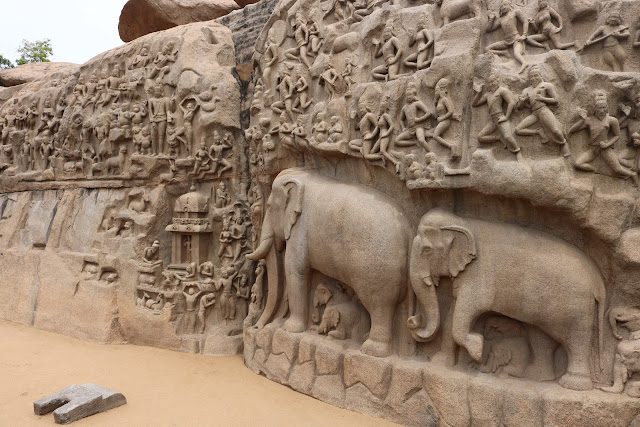Descent of Ganges
Reliefs are carved on rocks or boulders. These include the wall of the Krishna mandapa, where a superstructure was added in front of the relief. The best-known rock relief in Mahablipuram is the Descent of the Ganges (also known as Arjuna's Penance or Bhagiratha's Penance), the largest open-air rock relief.
The Descent of the Ganges is considered one of the largest bas-relief works in the world.The relief, consisting of Hindu mythology, is carved on two 27-metre-long (89 ft), 9-metre-high (30 ft) boulders.
There are two primary interpretations: the effort needed to bring the Ganges from the heavens to earth, and the Kirātārjunīya legend and the chapter from the Mahabharata about Arjuna's efforts to gain the weapon he needed to help good triumph over evil. A portion of the panel shows the help he received from Shiva to defeat the Asuras. Included in the panel are Vishnu, Shiva, other gods and goddesses, sages, human beings, animals, reptiles and birds.
According to another interpretation, an ascetic Bhagiratha is praying for the Ganges to be brought to earth. Shiva receives the river, to which all life is racing in peace and thirst. This theory has not been universally accepted because central characters are missing or are inconsistent with their legends. The absence of a boar from the entire panel makes it doubtful that it is single story, although scenes of Arjuna's penance and the descent of the Ganges are affirmed.The granite reliefs, from the early or middle 7th century, are considered by The Hindu as "one of the marvels of the sculptural art of India".



